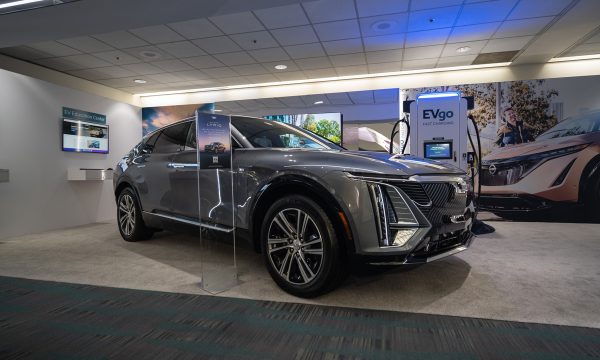
If a hydrogen-rotary engine can be made to meet future emissions requirements, it could also provide OEMs and customers with an option.
As it now stands, it seems likely that somewhere around 2035, or a few years thereafter, the only new cars and trucks we will be able to buy and sell will be battery electric vehicles (BEVs). The exact timing will depend on the details of actual legislation that may be enacted.
Most proposed regulations, worldwide, don’t actually specify BEVs. However, they call instead for zero emissions vehicles (ZEVs), tentatively leaving the door open for alternative ZEV technologies to be developed. But BEVs are what we’re likely to get.
Automakers have almost universally decided that BEVs are the expedient way to achieve the ZEV goal and are proceeding accordingly, rather than seriously exploring potential alternatives.
Could there still be an alternative that would address some of the major problems of BEVs, such as their excessive weight, recharging times, infrastructure demands, and battery raw materials supply, as well as disposal issues?
At least a few people think there is, and they are working on their own variations of a solution using technologies already effectively rejected by most of the auto industry—specifically, the Wankel rotary engine and hydrogen fuel.
Remember the Wankel? The rotary engine that put the zoom-zoom in Mazda’s RX sports cars?
It was invented by German engineer Felix Wankel, and made its automotive production debut in an NSU in 1964 before being adopted by Mazda. It was then licensed by Curtiss-Wright in the USA and developed almost to the point of production (in the Vega-based Chevrolet Monza and AMC Pacer) by General Motors, before that program was scrapped in 1974.
While the rotary engine was exceptionally smooth and made great power, relative to its size, both its exhaust emissions and fuel-consumption were higher than those for conventional engines—big problems at the time and ever since. The last Mazda with a rotary engine was built in 2012, seemingly doomed forever by emissions regulations.
Rumours suggest, however, that Mazda is working on a series-electric plug-in hybrid with a rotary engine range extender, running at highly-efficient constant speed and load, driving a generator to keep a battery pack charged.
It’s a logical approach, for combined with a relatively small battery pack it would be a compact and efficient powertrain package without much of the battery weight of a BEV. But it still wouldn’t be a ZEV.
That’s where the hydrogen fuel comes in. While there are challenges, hydrogen can be burned in a conventional reciprocating internal combustion engine (ICE) and, because it contains no carbon, there are no greenhouse gases (GHGs) in the exhaust. No carbon monoxide (CO), no carbon dioxide (CO2), no hydrocarbons (HC).
But there are nitrogen oxides—a lot of them—and they are regulated smog-forming pollutants.
The totally different geometry of a rotary engine, however, reduces many of the challenges of hydrogen as a fuel, and what NOx emissions there are can potentially be controlled by exhaust after-treatment.
We don’t know what Mazda has done in terms of hydrogen-rotary development, but we do know there has been considerable ongoing progress made in rotary engines outside the automotive sphere. They are now a common power source for military unmanned aerial vehicles (UAVs)—aka drones!
That development has resolved many of the original rotary issues, such as the need to use oil for cooling in the combustion chambers—they’re now air-cooled—and wear issues with apex seals, now replaced by fixed housing seals, as well as the use of roller bearings on the rotor and the main shaft. The only maintenance item remaining is said to be the spark plug.
A veteran British Wankel development engineer named David Garside, who has been working on the engines since 1964, has all but reinvented them to operate on hydrogen fuel. He has licensed his many patents to a British firm called Advanced Innovative Engineering.
Rumours suggest, however, that Mazda is working on a series-electric plug-in hybrid with a rotary engine range extender…
On a parallel path, an American firm called LiquidPiston has almost turned the form of the Wankel design inside out, in the process eliminating many of the emissions and operating issues inherent in that design.
If a hydrogen-rotary engine can be made to meet future emissions requirements in vehicle use as a range extender, it could at the very least provide manufacturers, and customers, with an alternative choice in the marketplace. At best it might even prove to be a superior alternative.
It is an opportunity that should be hard to pass up for some automakers with rotary-engine experience (Mazda?) or one with hydrogen fuel aspirations (Toyota?). Or perhaps, some combination of the two?











